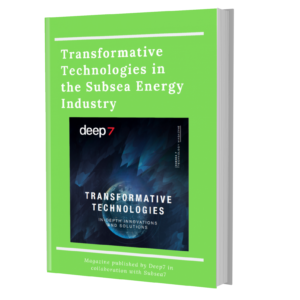Subsea Technology: Subsea Processing

Estimated reading time: 4 minutes

Subsea Technology & Installations
Similar to other industries, transformative technologies are equally prevalent in the oil and gas industry with new subsea technologies constantly being developed to reduce risks and costs. The oil and gas industry is transforming itself into a knowledge industry that uses shared data to create new ecosystems and business relationships.
One of the industry challenges is the installation of subsea processing plants that leads to longer tie-back distances. If these plants are installed at longer tie-back distances, it will lead to additional challenges of managing wax and hydrate related pipeline issues.
Here are the 3 conventional solutions used to reduce pipeline heat loss to accommodate subsea oil production as it goes deeper and to more demanding locations :
- Wet insulated pipe
- Flexible insulated pipe
- Pipe-in-Pipe (PIP) insulations
- Wet insulated pipe
This is the type of pipe that is most regularly found to be used for deepwater flowlines. With syntactic foam composite coating the steel pipes, the low-density hollow microspheres are able to decrease the weight and thermal conductivity of the pipe coating.
- Flexible insulated pipe
With a special tape around the pipe that comes with insulation materials with low thermal conductivity and reduced water dept capacity, flexible flowlines are cost effective. They can also be retrieved for reuse or decommissioning.
- Pipe-in-Pipe (PIP) insulations
For PIP insulations, they can achieve low U-values with high insulation performance. Even though they may cost more in terms of construction and placement costs as compared to wet insulations, the PIP insulations are able to cool down much faster.
However, the above-mentioned methods are no longer enough to achieve the product arrival temperature. The development of the Electrically Heat Traced Flowline (EHTF) has been able to greatly extend the economic length of heated flowline but it is also an unsustainable choice when it comes to tie-backs that goes far more than 50km for oil fields and 100km for gas.
Progressively, subsea processing is going to be the main technology that determines the accomplishments of deepwater or long-distance field developments. Subsea processing methods typically involve the following steps:
- Separation of water and oil
- Produced water treatment
- Water injection
- Boosting
It has been determined that by utilising water at the source for reinjection, there is greater efficiency. Hence, new developments in technology are pushing for a reliable oil-in-water meter to meet the various mandatory requirements for re-injection ad disposal, allowing subsea processing to be a step closer to maximal efficiency.
Other than subsea processing, technological developments are also taking place in other parts of the subsea energy industry. Technological innovation is changing the way subsea inspection, repair ad maintenance activities are being carried out.
To learn more about the other technological developments, Deep7 has collaborated with Subsea7 to publish a magazine on transformative technologies in the subsea energy industry. The magazine aims to serve as an introduction and a guide to the in-depth innovations and solutions that has been developed specifically for the subsea energy industry. It covers information on the 4 critical technologies – subsea processing, subsea electrification, road to autonomy and deploying digitalisation.
Click below to download your free guide
“Transformative Technologies in the Subsea Energy Industry”
https://blog.opuskinetic.com/download-subsea-technology-and-installation

